Speeding up the progress of the 72.03 billion USD metro project; Investing 19,784 billion VND to build the Nam Dinh - Thai Binh expressway
Accelerating the progress of the Hanoi and Ho Chi Minh City metro development project worth 72.03 billion USD; Investing 19,784 billion VND to build 60.9 km of 4-lane Nam Dinh - Thai Binh expressway...
Those were two of the notable investment news stories of the past week.
Accelerating the progress of the Metro Development Project in Hanoi and Ho Chi Minh City worth 72.03 billion USD
The People's Committees of Hanoi and Ho Chi Minh City are requested to focus resources on reviewing procedures and completing the dossier of the Project on developing the urban railway network system until 2035 before November 8, 2024.
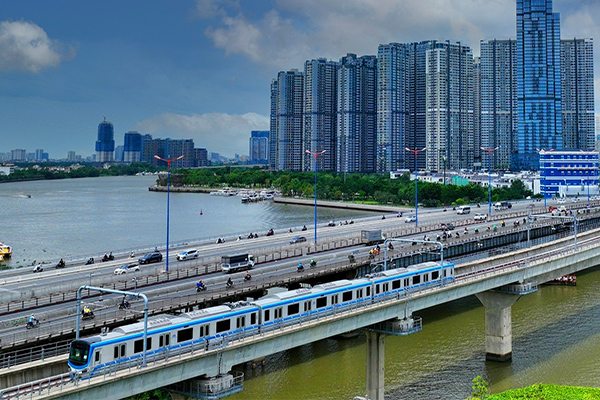 |
| A section of the Ben Thanh - Suoi Tien urban railway line is about to be put into operation by the Ho Chi Minh City People's Committee. |
The Ministry of Transport (MOT) has just sent an official dispatch to the People's Committees of Hanoi and Ho Chi Minh City regarding the Project to develop the urban railway network system of Hanoi and Ho Chi Minh City by 2035.
Specifically, the Ministry of Transport requested the two cities to focus resources, review procedures, complete the Project dossier and send it to the Ministry of Transport before November 8, 2024 to implement the next procedures; at the same time, arrange personnel, provide complete documents, proactively coordinate with the Ministry of Transport to complete the Project, Submission, and Draft Conclusion of the Politburo.
Under the direction of Deputy Prime Minister Tran Hong Ha, the Ministry of Transport is responsible for compiling a Project dossier to submit to the Government Standing Committee before October 10, 2024.
However, up to now, the Ministry of Transport has only received the Project report from the Ho Chi Minh City People's Committee, but has not yet received the Project report from the Ho Chi Minh City People's Committee, so the synthesis of the Project documents has been slower than the Deputy Prime Minister's direction.
To ensure consistency in the content of the Project, the Ministry of Transport recommends that the two cities promptly review and determine the investment rate for urban railways (elevated and underground); the basis for selecting technology; the ability to master technology, operate and exploit (determine the agency in charge of receiving technology, equipment, locomotives, and carriages); human resource training needs and plans; resource mobilization plans; management and exploitation models; implementation mechanisms and policies, etc.
In addition, on October 17, 2024, the Ministry of Finance held a meeting with the Ministry of Transport, the Ministry of Planning and Investment, the People's Committee of Hanoi and the People's Committee of Ho Chi Minh City to calculate and assess the impact of public debt when synchronously implementing key national railway investment projects.
“The Hanoi People's Committee and Ho Chi Minh City People's Committee are requested to closely coordinate with the Ministry of Finance to soon have a report assessing the overall impact of public debt when implementing investment projects,” the Ministry of Transport's official dispatch stated.
In the report on the Urban Railway Network Project of Hanoi and Ho Chi Minh City by 2035, compiled by the Ministry of Transport and sent to the Government leaders in mid-September 2024, the goals of covering the urban railway network of the two above-mentioned localities have been relatively clearly defined.
Accordingly, Hanoi City aims to complete about 598.5 km of urban railway, of which by 2030, it strives to put into operation about 96.8 km; by 2035, it strives to put into operation about , taking on 50-55% of the public passenger transport market share; by 2045, it strives to put into operation about 200.7 km, taking on 65-70% of the public passenger transport market share and completing urban railway routes according to the Capital planning and the adjusted Capital Construction Master Plan.
Meanwhile, the Ho Chi Minh City People's Committee aims to complete about 510.02 km of urban railways, of which by 2035, it strives to put into operation about 183 km, taking on 30-40% of the public passenger transport market share; by 2045, it strives to put into operation about 168.36 km, taking on 40-50% of the public passenger transport market share; by 2060, it strives to put into operation about 158.66 km, taking on 50-60% of the public passenger transport market share and complete the urban railways according to the Ho Chi Minh City Master Plan and the adjusted Ho Chi Minh City Master Plan.
The urban railway projects in Hanoi and Ho Chi Minh City, when completed, will not only change the traffic landscape of the two largest cities but also contribute to reducing traffic congestion and accidents.
To ensure consistency in investment and operation, the Ministry of Transport proposed some main general technical parameters for the urban railway system in the two cities: 1,435 mm gauge, double track; design speed of 80-160 km/h; overhead power supply system or third rail power supply; automatic train operation; vehicles using EMU distributed power trains.
Regarding the implementation roadmap, the Ministry of Transport plans to complete the urban railway lines according to the current planning by 2035, with a total length of about 580.8 km; by 2045, complete about 369.1 km (Hanoi City about 200.7 km; Ho Chi Minh City about 168.4 km); by 2060, complete about 158.66 km in Ho Chi Minh City/
The capital investment needs for developing the urban railway network in the two cities are as follows: by 2035, about 72.03 billion USD is needed; by 2045, about 44.43 billion USD is needed; by 2060, about 40.61 billion USD is needed. Of which, by 2030, the central budget is proposed to support about 11.82 billion USD and by 2035, the central budget is proposed to support about 6.29 billion USD.
Postponing the submission of the proposal for the Vietnam-Laos Railway PPP Project worth VND 27,485 billion
The investor consortium proposed to postpone the submission of appraisal and approval documents for the Pre-Feasibility Study Report of the Vung Ang - Tan Ap - Mu Gia Railway Project under the PPP method.
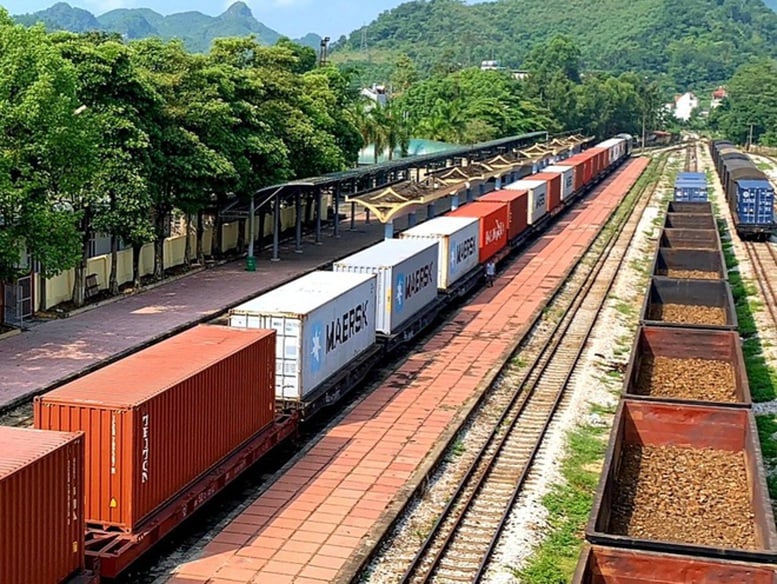 |
| Illustration photo. |
The consortium of Lao Petroleum Trading Company - Deo Ca Group Joint Stock Company has just requested the Ministry of Transport to approve the adjustment of the time for submitting the appraisal and approval documents of the Pre-Feasibility Study Report of the Vung Ang - Tan Ap - Mu Gia Railway PPP Project.
Accordingly, the Lao Petroleum Trading Company - Deo Ca Group Joint Stock Company Joint Stock Company will submit the initial report on November 26, 2024; submit the final report 1 month later and complete the pre-feasibility study report on the basis of the expected State budget capital allocation (if any) by mid-January 2025.
In October 2023, the Ministry of Transport approved the consortium of Lao Petroleum Trading Company - Deo Ca Group Joint Stock Company as the investor to propose the project to prepare a pre-feasibility study report for this railway project under the PPP method.
The consortium must submit the project proposal to the headquarters of the Railway Project Management Board (Ministry of Transport) before October 10, 2024. In case the proposed investor fails to submit the proposal within the above deadline, it is understood that the proposed investor is no longer interested in studying the project.
It is known that the consulting unit has basically completed the site survey and is urgently completing the documents according to regulations.
However, recently, Lao Petroleum Trading Company has been facing difficulties due to the impact of the macro economy and the restructuring of the parent company, so there has not been good coordination for the Investor Consortium to propose the project to complete its tasks.
In addition, the forecasting of transportation demand (goods/passengers) for the project depends on the forecast results of the Vientiane – Thakhek – Mu Gia Railway Project, which currently has no specific results.
For technical technology content, the investor consortium needs a lot of time to select and evaluate as well as refer to different railway engineering technologies from China, Europe, Japan, etc.
In addition, more time is needed to thoroughly study station locations, domestic and international connections to suit relevant planning, as well as study appropriate investment options to ensure harmonious interests among parties involved in the Project implementation.
The Vung Ang – Tan Ap – Mu Gia railway project belongs to the Vientiane – Vung Ang railway line, is part of the railway network planning for the period 2021 – 2030, with a vision to 2050, approved under Decision No. 1769/QD-TTg dated October 19, 2021 of the Prime Minister, with an investment roadmap before 2030.
This is an important project, part of the overall Vietnam - Laos Railway Project, one of the priorities of the Governments of Vietnam and Laos, demonstrated in the implementation of high-level agreements between the two Parties and two States on economic development and infrastructure development.
In March 2022, FLC and Lao Petroleum Trading Company also signed a memorandum of understanding to cooperate in developing the Vientiane - Vung Ang railway project connecting Laos - Vietnam.
The Vientiane – Vung Ang railway has a total length of 554.7 km, spanning Laos and Vietnam. The project has a double track scale, 1,435 mm gauge, speed of 150 km/h, total investment of about 149,550 billion VND, implemented under the PPP method.
In particular, the Mu Gia - Tan Ap - Vung Ang section is also proposed to be invested under the PPP method with a total length of about 103 km, including 8 stations (1 main station, 7 intermediate stations) with a total investment of about 27,485 billion VND.
This railway will connect Vientiane to Vung Ang port, connecting with the Laos-China railway, expected to create an extended freight route to northern Laos and southern China.
The terminus of this railway line, Vung Ang port, will play an important role in promoting economic activities of the two countries through trade and maritime transport, towards the markets of Northeast Thailand, China, Korea and Japan.
Nearly 27.26 billion USD of foreign investment capital registered in Vietnam, the growth trend is slowing down
Total foreign investment capital registered in Vietnam in the first 10 months reached nearly 27.26 billion USD, up only 1.9% over the same period last year. Notably, newly registered capital decreased compared to the same period in 2023.
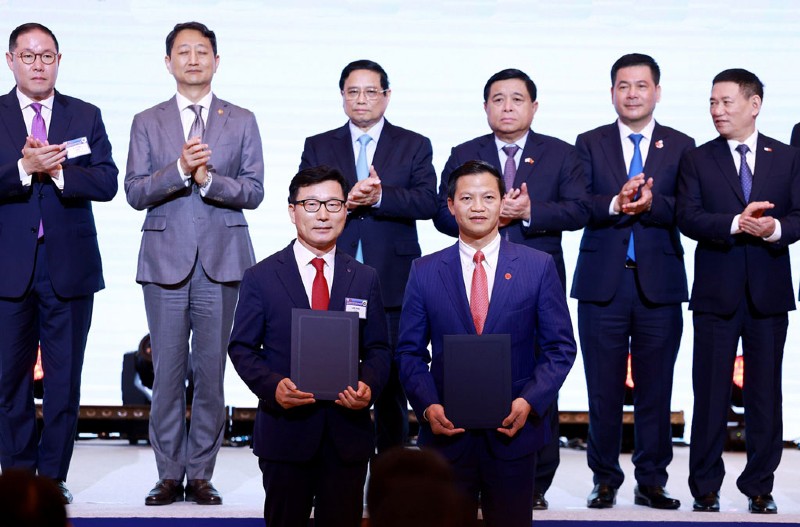 |
| Amkor's project to increase investment capital by an additional 1.07 billion USD has helped foreign investment capital adjust and maintain its "form". |
According to data just announced by the Foreign Investment Agency (Ministry of Planning and Investment), as of October 31, 2024, the total registered foreign investment capital in Vietnam reached nearly 27.26 billion USD, an increase of 1.9% over the same period in 2023.
Of these, in terms of new registration, there were 2,743 projects, with total registered capital reaching nearly 12.23 billion USD, up 1.4% and down 2.5% respectively over the same period last year.
Meanwhile, regarding capital adjustment, there were 1,151 projects registered to adjust investment capital, up 6%, with the total registered capital increase reaching nearly 8.35 billion USD, up 41.7% over the same period.
Regarding investment through capital contribution and share purchase, in 10 months, there were 2,669 capital contribution and share purchase transactions by foreign investors, with a total capital contribution value of more than 3.68 billion USD, down 10.4% and 29% respectively compared to the same period.
Looking at the above figures, it can be seen that although foreign investment in Vietnam is still on a positive trend, it is showing signs of slowing down. In 10 months, the total registered foreign investment in Vietnam increased by only 1.9%, down 9.7 percentage points compared to the increase in 9 months.
In particular, new investment capital decreased by 2.5% after a period of strong growth. The number of newly registered projects also increased slightly by only 1.4% compared to the same period last year. And the reason pointed out by the Foreign Investment Agency is that new investment projects in October 2024 were small in scale, with only a few projects having investment capital from over 100 million USD to over 300 million USD. Meanwhile, in October 2023, there were 3 projects with large investment capital from over 500 million USD to 1.5 billion USD.
Investment capital through capital contribution and share purchase is also continuing to decline. On the contrary, adjusted investment capital in the 10 months is still maintaining a strong increase (41.7%). This is a positive point related to the picture of attracting foreign investment in Vietnam from the beginning of the year to the year.
Another positive point is that disbursed capital still maintains its performance. According to the figures announced by the Foreign Investment Agency, in 10 months, about 19.58 billion USD of foreign investment capital was disbursed, an increase of 8.8% over the same period in 2023.
Also a positive trend is that many large projects in the fields of semiconductors, energy (production of batteries, photovoltaic cells, silicon bars), manufacturing of components, electronic products, products with high added value... have received new investment and capital expansion in 10 months.
Commenting on the situation of attracting foreign direct investment (FDI) into Vietnam, the Foreign Investment Agency said that investment capital continues to focus on provinces and cities with many advantages in attracting foreign investment (good infrastructure, stable human resources, efforts to reform administrative procedures and dynamism in investment promotion, etc.), such as Bac Ninh, Ho Chi Minh City, Quang Ninh, Hai Phong, Ba Ria - Vung Tau, Binh Duong, Hanoi, Dong Nai, Bac Giang, Ninh Thuan. These 10 localities alone accounted for 79.9% of new projects and 70.9% of the country's investment capital in 10 months.
Figures from the Foreign Investment Agency also show that in the past 10 months, foreign investors have invested in 18 out of 21 sectors of the national economy.
Of which, the processing and manufacturing industry took the lead with a total investment capital of nearly 17.1 billion USD, accounting for nearly 62.6% of the total registered investment capital, down 13.5% over the same period. The real estate business ranked second with a total investment capital of nearly 5.23 billion USD, accounting for nearly 19.2% of the total registered investment capital, 2.38 times higher than the same period. Next were the electricity production and distribution industries; wholesale and retail with a total registered capital of nearly 1.12 billion USD and nearly 1 billion USD respectively. The rest were other industries.
In terms of investment partners, there were 106 countries and territories investing in Vietnam in the first 10 months of 2024. Of which, Singapore took the lead with a total investment capital of more than 7.79 billion USD, accounting for nearly 28.6% of the total investment capital, up 61.3% over the same period in 2023. China ranked second with more than 3.61 billion USD, accounting for 13.3% of the total investment capital, up 5.4% over the same period. Followed by Korea, Japan, Hong Kong...
Da Nang needs 538 billion VND to invest in the National Highway 14B intersection connecting Da Nang - Quang Ngai Expressway
The total estimated investment for the National Highway 14B intersection connecting Da Nang - Quang Ngai Expressway is 538 billion VND. Da Nang City proposed 269 billion VND from the central budget, the City will arrange the remaining capital.
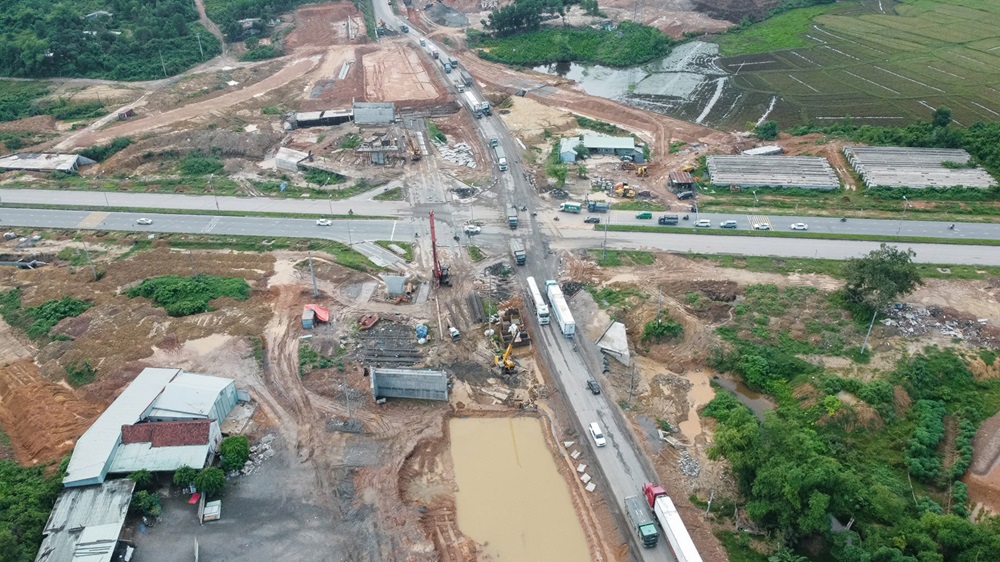 |
| Hoa Lien - Tuy Loan expressway is under construction. |
On November 5, the Department of Transport of Da Nang announced that the City People's Committee has just proposed to the Ministry of Transport to request investment policy for the National Highway 14B intersection connecting Da Nang - Quang Ngai Expressway (Tuy Loan intersection).
According to the People's Committee of Da Nang City, Tuy Loan intersection was approved by the Ministry of Transport in 2018, including the main routes of Da Nang - Quang Ngai Expressway and Hoa Lien - Tuy Loan Expressway with a scale of 4 lanes; branch of National Highway 14B including 2 motor lanes and 1 merging lane on each side.
However, according to the Decision Approving the Road Network Planning for the period 2021 - 2030, with a vision to 2050, the Da Nang - Quang Ngai and Hoa Lien - Tuy Loan expressways will be invested with a scale of 6 lanes before 2030; National Highway 14B 14B according to the Da Nang City Planning for the period 2021-2030, with a vision to 2050, will have a scale of 6 lanes.
Therefore, Da Nang City proposes that the Ministry of Transport unify the investment in completing the bridge section to ensure compliance with the road network planning for the 2021-2030 period and the Da Nang City Planning to ensure synchronization and meet the future needs of the city.
Total investment after adjusting the scale is expected to be 538 billion VND.
The city proposed that the Ministry of Transport report to the Prime Minister to assign the Ministry of Planning and Investment to arrange capital from the central budget for Da Nang City to implement the Project, about 269 billion VND, equivalent to 50% of the total investment, from the medium-term public investment capital for the period 2021-2025 and 2025.
Da Nang City will allocate the remaining capital to implement the project in accordance with the direction of the Prime Minister in Notice No. 417/TB-VPCP dated September 13, 2024.
According to the People's Committee of Da Nang City, separating the Tuy Loan intersection project into an independent project and assigning the city as the managing agency will create favorable conditions for investment implementation, contributing to speeding up the project's completion in the coming time.
Investing in the intersection of National Highway 14B with the Da Nang - Quang Ngai Expressway not only benefits the traffic infrastructure but also promotes socio-economic development and improves the quality of life for people.
Proposal to establish public ownership of assets of National Highway 51 BOT Project
The Ministry of Transport has just sent an official dispatch to the Ministry of Finance requesting that the ministry soon establish public ownership of the assets of the National Highway 51 expansion project, section Km0+900-Km73+600, in Dong Nai and Ba Ria - Vung Tau provinces under the form of a BOT contract.
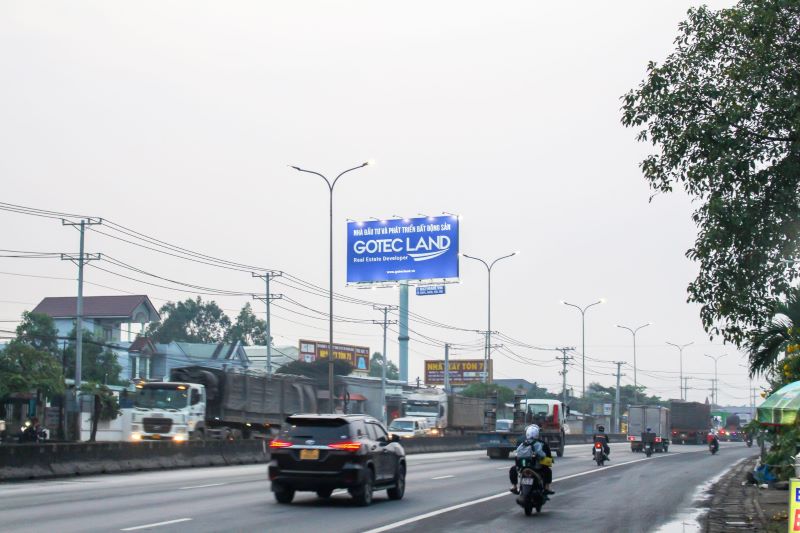 |
| A section of National Highway 51 through Dong Nai. |
The Ministry of Transport said that the management and maintenance of the main route of National Highway 51 is very urgent; at the same time, road traffic infrastructure assets are special assets, serving public purposes, people's livelihood, economic development and ensuring national security and defense... In any circumstances and conditions, the State management agency must organize the management and exploitation of assets to ensure continuous, smooth and safe traffic.
“Therefore, the Ministry of Transport continues to request the Ministry of Finance to unify the establishment of public ownership of the assets that have been handed over by the project enterprise to the Vietnam Road Administration to support competent State agencies to promptly organize and implement the management, maintenance and exploitation of assets according to regulations,” the leader of the Ministry of Transport proposed.
This is the third time in the past 6 months that the Ministry of Finance has been asked to establish public ownership of the assets of the BOT project to expand National Highway 51 in Dong Nai and Ba Ria - Vung Tau provinces.
It is known that the investor has requested to temporarily suspend project maintenance work on these assets and hand over the Project assets to the Vietnam Road Administration by the end of January 2023.
By April 19, 2023, the Project investor, BVEC, had handed over 72.7 km including the road length and bridge length over 25 m belonging to the section from Km0+900-Km73+600 of National Highway 51 to the Vietnam Road Administration.
However, the investor has not yet handed over the operator's house, toll collection equipment system, as well as other assets serving the Project.
To ensure continuous management, maintenance and exploitation of transport infrastructure assets, ensure traffic safety, and protect and extend the exploitation period of transport infrastructure assets, the Vietnam Road Administration has received the assets handed over by BVEC to carry out management, maintenance and preservation of assets.
According to the contract between the Vietnam Road Administration and BVEC signed in 2009, the total toll collection period for the BOT project to expand National Highway 51 is 20.66 years, of which the toll collection period to recover capital is about 16.66 years (from August 3, 2012 to March 27, 2029); the toll collection period to generate profit is 4 years (from March 28, 2029 to March 28, 2033).
By the end of February 2017, the project's capital recovery fee collection period was adjusted to 20 years, 6 months and 11 days, that is, from July 1, 2009 to January 12, 2030, and 4 years of profit-generating fee collection.
At the end of 2018, due to some changes related to input factors and recommendations from the State Audit, the Vietnam Road Administration recalculated the time to collect tolls to generate profit and reduced the time to generate profit from 4 years to 9 months.
To avoid BVEC from collecting tolls beyond the time limit, on January 9, 2023, the Vietnam Road Administration issued Document No. 137/CDBVN to temporarily suspend toll collection at toll stations under the BOT Project to invest in expanding National Highway 51 from 7:00 a.m. on January 13, 2023 while negotiations between the two sides have not yet ended.
There are currently two issues that have not reached consensus between the investor and the Vietnam Road Administration regarding the contract fee for the BOT project to expand National Highway 51: the equity preservation fee of 8.7%/year and the time for collecting tolls to generate profit.
At the end of October 2024, the Ministry of Transport issued a document directing the Vietnam Road Administration and relevant agencies to urgently resolve the existing problems of the BOT project to invest in expanding National Highway 51 in accordance with its authority and legal regulations.
Ho Chi Minh City proposes to retain at least 21% of budget to prioritize infrastructure investment
The Ho Chi Minh City People's Committee has just reported the summary of the Project to adjust the budget regulation ratio for Ho Chi Minh City in the period of 2022 - 2025, with a vision for 2026 - 2030 (under the Ho Chi Minh City Management Innovation Breakthrough Program).
 |
| The intersection connecting Ben Luc – Long Thanh Expressway with National Highway 1 through Binh Chanh District, Ho Chi Minh City. Photo: Le Toan |
The summary report shows that the budget allocation rate for the City has continuously decreased from 33% in 2000 to 18% in the period 2017 - 2020. By the period 2022 - 2025, it will increase to 21%.
Meanwhile, the City needs more resources for investment because in recent times, the City has contributed a high proportion to the country's economic growth (about 23% of national GDP).
Furthermore, the City has the highest budget revenue transferred to the Central Government in the country with an annual contribution of 27% of the national budget revenue.
However, the City is facing many new and increasing challenges such as: economic growth compared to the whole country is decreasing, the export ratio compared to the whole country is decreasing, the superiority in competitiveness of the investment and business environment is also decreasing, inadequate traffic infrastructure, greatly hindering the faster and sustainable development of the City.
In August 2020, the Ho Chi Minh City Party Committee submitted a document to the Politburo on the policy of implementing the Project to adjust the budget allocation rate for the City in the period of 2022 - 2025 to 23% and the period of 2026 - 2030 to 26%. However, the City was only approved at 21%.
Retaining 21% of the budget has helped the City have resources to invest in key infrastructure projects and improve people's welfare, increasing income for officials, civil servants, public employees and workers.
Regarding the direction and tasks of developing Ho Chi Minh City until 2030, with a vision to 2045, the City proposes to keep the City's budget regulation rate at 21% until the end of 2025 and continue to keep it at no lower than 21% in the following years to create conditions for the City to have resources to invest in developing key infrastructure projects and implementing strategic tasks and breakthroughs.
Regarding solutions to effectively use resources for development investment, the City focuses on disbursing public investment capital, is determined to complete the public investment plan, and accelerate the implementation of key projects.
The city will review, classify and develop plans and roadmaps to have solutions to handle difficulties and problems that have existed for many years, especially important national projects, key projects, and projects using ODA capital that are behind schedule.
The state capital in PPP projects is for "support" not "capital contribution"
Discussing the Draft Law amending and supplementing a number of articles of the Law on Planning, the Law on Bidding, the Law on Investment, and the Law on Investment under the public-private partnership (PPP) model, the majority of National Assembly deputies agreed with the Government's proposal to allow the application of a state capital ratio of more than 50%, but not exceeding 70% of the total investment in some specific cases.
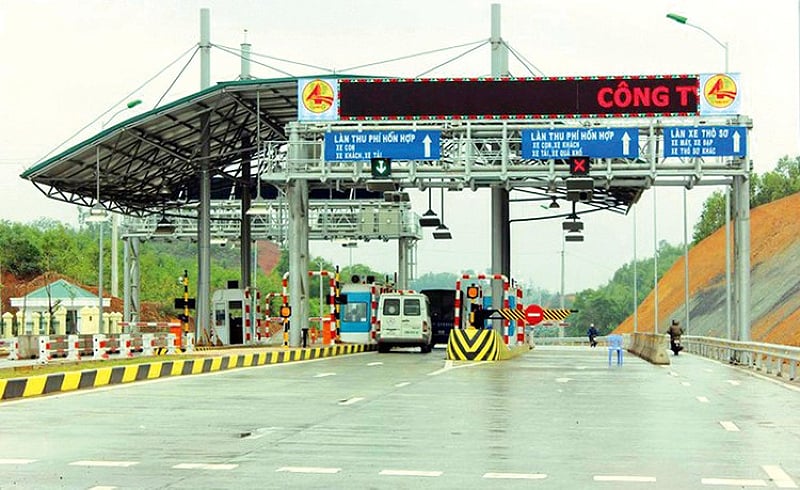 |
| Applying the PPP investment method will bring long-term investment efficiency when private investors commit to organizing business, operating, maintaining and servicing the project for 20-30 years. |
However, there are also opinions suggesting to consider this regulation, because if using 70% of state capital, it should be used for public investment. There are also opinions suggesting that there is no need to regulate the limit on the use of state capital, the specific ratio will be determined based on the financial plan of each project.
In particular, there are opinions suggesting to clarify that when using 70% state capital, the PPP project enterprise will have 70% state capital contribution, 30% private capital, becoming a state-owned enterprise.
In the explanatory report sent to the National Assembly deputies, the Ministry of Planning and Investment clarified: In Submission No. 675/TTr-CP, the Government reported specifically on the practical implementation of infrastructure investment projects to create momentum for socio-economic development in some disadvantaged regions.
These projects have low initial transportation demand, so they need more state capital participation to ensure feasibility when attracting investment under the PPP method. Meanwhile, some projects, just calculating the cost of site clearance and resettlement, have exceeded 50% of the total investment of the project.
In case of investing in all of the above urgent works by public investment, the pressure on the state budget is very large, does not guarantee the balance capacity.
"Besides, applying PPP investment methods will bring long-term investment efficiency when private investors are committed to organizing business, operating, maintaining and maintaining works for 20-30 years, the state budget will not have to arrange to carry out these activities," the Ministry of Planning and Investment explained cases that can apply the state capital ratio of more than 50%, up to 70% of the total investment.
Moreover, stipulating a state capital limit participating in PPP project is also necessary. This will be the basis for state agencies to consider and choose the appropriate investment method for the project (public investment or PPP investment); do conditions to determine the ability to balance and arrange budgets in each period.
The stipulation of the state capital limit is also aimed at the support of the state budget to attract private investors but still ensure specific conditions to avoid widely application, without meeting investment efficiency.
In particular, the Ministry of Planning and Investment clarifies, according to the provisions of the PPP Law and according to international practices, the state capital participating in the PPP project is "supporting" investors and project enterprises to increase the feasibility of the project, not "contributing capital" into enterprises to divide profits.
Therefore, the PPP project enterprise established by investors is a private enterprise, operating under the law on enterprises and compliance with the signed project contract. The state capital will be paid and disbursed to investors and project enterprises according to the progress, the rate committed in the contract.
The Government submitted to the National Assembly to adjust the investment policy of Long Thanh Airport Project
On November 6, the Government issued a report No. 747/CP - TTr to the National Assembly on adjusting the investment policy of Long Thanh International Airport Project.
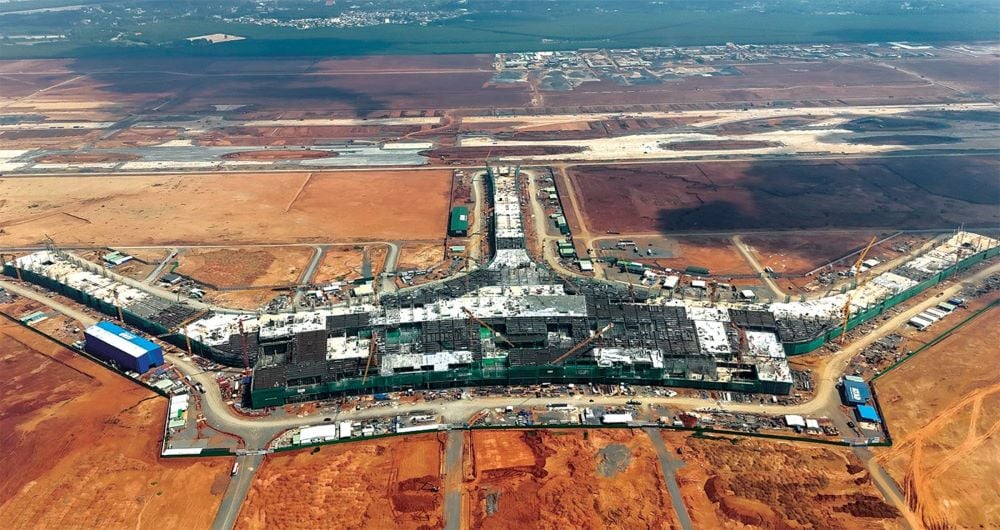 |
| Construction of Long Thanh International Airport Phase 1. |
Accordingly, on the basis of the need for investment, the ability to balance the investment capital, the Government proposed the National Assembly to consider and adjust the Resolution No. 94/2015/QH13 dated June 25, 2015 on the project investment policy and Resolution No. 95/2019/QH14 dated November 26, 2018 on the feasibility study report of phase 1 of the project at the joint resolution of the 8th Session, the XV National Assembly as the basis of implementation.
Specifically, the Government proposes the National Assembly to adjust the scale and time of implementation phase 1 in Clause 6, Article 2 of Resolution No. 94/2015/QH13: "Investment in building 2 take -off lines in the North and 1 passenger terminal and auxiliary items synchronized with a capacity of 25 million passengers/year, 1.2 million tons of goods/year;
Implementing the scale of investment in phase 1 in Clause 1, Article 1 of Resolution No. 95/2019/QH14 Thanh: "Investment in building 2 take -off lines in the North and 1 passenger terminal and auxiliary items synchronously with a capacity of 25 million passengers/year; 1.2 million tons of goods/year".
The Government also proposed that the National Assembly allowed the Government to organize the approval of the research report to adjust phase 1 of the project according to its competence without having to report to the National Assembly for approval.
Thus, in addition to the completion progress to the end of 2026 instead of the end of 2025, Long Thanh International Airport Project phase 1 will have an additional take -off.
In Report No. 747, the Government said that at the time of the project investment policy, due to the determination of capital to invest in phase 1 of the project is still difficult, the National Assembly has decided to phase 1 of the project only invested in building a runway landing in the northern area of the port.
In case Long Thanh International Airport must temporarily suspend the exploitation due to the incident on the Landing Road No. 1, Tan Son Nhat International Airport will play a supporting role for Long Thanh.
In phase 2, the project will invest in building an extra open -to -offering lane in the south of the port (the Landing Road No. 2) to meet the exploitation with a capacity of about 50 million passengers/year; Phase 3 will invest in building 2 more take -off lines, including 1 takeoff line in the North (Landing Road No. 3) and 1 take -off line in the South (Landing Road No. 4) to meet the exploitation with a capacity of about 100 million passengers/year.
However, in the process of implementing phase 1, the Vietnam Airport Corporation (ACV) - the investor of the component project of component 3 realized that the construction of the 3rd Landing Road next to the number 1 take off 400 m to the north, to put into synchronous exploitation along with phase 1, it will bring many benefits for management, exploitation and contribute to improving the efficiency of the international airport.
Specifically, having an additional 2nd take -off road at Long Thanh International Airport phase 1 will meet the exploitation needs when a take -off line has a problem.
It is known that according to the plan, Tan Son Nhat International Airport can serve about 50 million passengers/year. In 2023, the exploitation output of Tan Son Nhat reached over 41 million passengers. It is expected that by 2030, the total demand for air transport of Ho Chi Minh City and neighboring provinces is about 71 million passengers/year ”.
Thus, in the case of the No. 1 takeover of Long Thanh International Airport, the problem will have to transfer flights to Tan Son Nhat. At that time, Tan Son Nhat will be overloaded, the aircraft will have to fly in the air, generating more costs and affecting the environment.
Therefore, the construction of landing immediately No. 3 will meet the exploitation demand for phase 1 of Long Thanh International Airport when the Landing Road No. 1 occurs, not having to switch to Tan Son Nhat; At the same time, good support for Tan Son Nhat in case of problems.
In case after phase 1 put into operation to invest in building a take -off road No. 3, it will interrupt the port exploitation due to the connection of infrastructure, technical control system ... with the Landing Road No. 1.
In addition, the construction of a take -off road No. 3 will affect the exploitation of the port due to the dust arising during the construction process.
The Government said that at present, to ensure the non -exploitation of the Landing Road No. 1, the background of the Landing line No. 3 has been basically leveled to the height of the design, only need to build the road surface structure and install the equipment to be exploited.
Therefore, the investment cost is only about 3,304 billion dong, used from after -bidding and reserve source, so it does not exceed the total investment of 99,019 billion dong of the component project 3 implemented by ACV.
Thus, with the investment cost does not increase but the capacity and efficiency of the port increases, thereby contributing to improving the investment efficiency of phase 1 and phase 2 of the project.
In addition, the investment right to land for landing No. 3 in phase 1 has many advantages such as: In accordance with the port planning approved by the Prime Minister; The ground was liberated and assigned to ACV; The roadside has been basically leveled to design; Saving costs and construction time; The capital has been arranged by ACV due to the total approved investment.
"This investment, not only improves the investment efficiency of phase 1 and phase 2 of the project, but also contributes to perfecting the important national transport infrastructure system, thereby reducing logistics costs, improving the competitiveness of the economy, serving the task of ensuring national defense and security," the Government said.
Da Nang is expected to start the project of more than VND 817 billion by 2025
The main water drainage project from the downstream of the high -tech drainage canal to the flood drainage canal of Hoa Lien commune has been approved by the City People's Council for investment policy on December 15, 2022. The City People's Committee approved construction investment projects on 11/4/2024 and assigned the Management Board of Da Nang Industrial and High -tech infrastructure development projects as the investor.
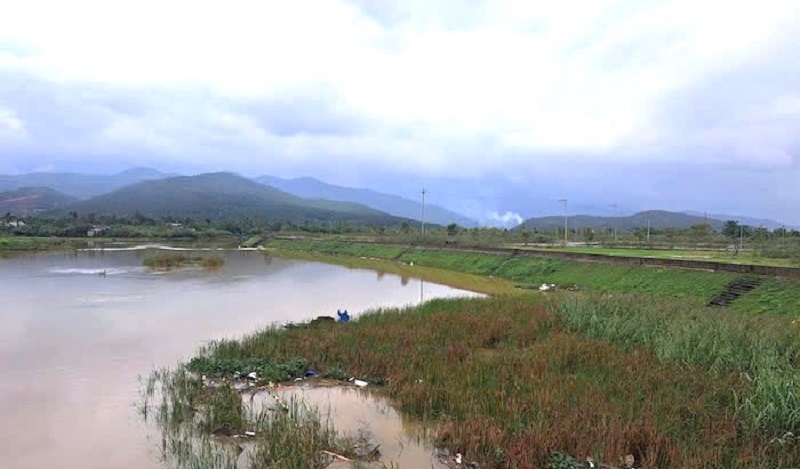 |
The main water drainage project from low -tech canal of high -tech parks on Hoa Lien flood drainage canal with an investment of more than VND 817 billion. |
The project will invest in canals and regulating lakes, including the southern canal of 1.64 km long, the northern canal is 0.574 km long, two regulating lakes, horizontal drainage works, traffic, medium voltage lines, transformer stations, lighting and reimbursing irrigation channels ... with a total investment of VND 817,186 billion.
According to the Department of Construction of Da Nang City, the Management Board of Da Nang Industrial and Industrial Zone Infrastructure Development Projects is also coordinating with Hoa Vang District People's Committee to implement the ground clearance of the project. In particular, 528/874 records have been taken.
The Department of Construction of Da Nang said that the main water drainage project from the downstream of the high -tech drainage canal of Hoa Lien commune flood drainage canal is expected to start in May 2025. This project belongs to the group of works and projects to start and complete the 50th anniversary of the Liberation of Da Nang City and the Party Congress at all levels for the 2025 - 2030 term.
It is difficult to ask investors to disburse all capital for 5 years
Information at the regular press conference, on the afternoon of November 7, Mr. Pham Tuan Anh, Head of Planning General Department (Department of Planning and Investment of Ho Chi Minh City), informed about the problems and difficulties arising after one year of implementing Resolution 98 piloted a number of specific mechanisms and policies for city development.
| Mr. Pham Tuan Anh, Head of Planning General Department (Department of Planning and Investment of Ho Chi Minh City) information at the press conference. Photo: Trong Tin |
According to Mr. Pham Tuan Anh, after one year of Resolution 98, the city has recorded a number of difficulties and obstacles arising.
The first is related to the content of identifying strategic investors to enjoy incentives, incentives, investment participation according to the simpler regulations and procedures than the current regulations.
According to Resolution 98, the strategic investor must commit to disbursement of the total investment capital within 5 years from the date of decision on investment policy or granting investment licenses. This will affect the implementation of investors participating in the big project.
"For example, the international transit port Can Gio has a very large capital. In addition to construction investment, the port needs to transfer goods to the design capacity, so it takes a lot of time.
Secondly, Resolution 98 allows the use of Ho Chi Minh City budget to support other localities for inter -regional projects, connected projects. For example, the Ring 3, Ring 4 and some highways.
The city can support a part of the budget to implement items in the Ring Road project. However, the order and procedures for other localities to receive and approve this capital have no specific instructions.
Mr. Tuan Anh said that this content also caused confusion for the city and localities when deployed. The City People's Committee has proposed the Ho Chi Minh City National Assembly delegation and the People's Council to propose the National Assembly to update and supplement this content to the Law on Public Investment, or amend, supplement and clarify in Resolution 98.
Another problem presented by Mr. Pham Tuan Anh is Resolution 98 that allows PPP projects in the city. Thu Duc. In fact, TP. Thu Duc has been decentralized, decentralized procedures for projects, however, the order of implementation steps has not been clarified and needs to be supplemented.
More than 40 German enterprises come to Dong Nai to find investment opportunities
On November 7, Dong Nai People's Committee received and worked with more than 40 German enterprises led by Mr. Alexander Ziehe, president of the Association of German enterprises in Vietnam as the head of the delegation to Dong Nai to learn about investment opportunities.
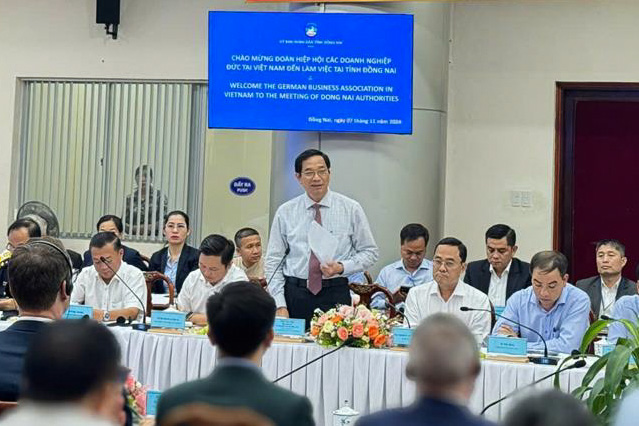 |
| Vice Chairman of Dong Nai People's Committee Vo Van Phi (standing) spoke at the meeting with German enterprises. |
At the meeting, information to German enterprises, Mr. Vo Van Phi, Vice Chairman of Dong Nai People's Committee, said that there are currently 12 projects of German enterprises investing in Dong Nai with an investment capital of over 273 million USD.
German enterprises investing and doing business in Dong Nai are effective and well complied with the laws on investment, environment, construction, labor ..., making an important contribution to the local socio -economic development.
Vice Chairman of Dong Nai People's Committee said that by 2026 Long Thanh International Airport in Dong Nai will be completed and put into operation phase 1. This project will create a driving force for development not only for Dong Nai but also for the whole key economic region of the south.
At that time, Dong Nai province will have a full range of transport methods including: road, airways, railways, inland waterways, to increase investment attraction in the locality.
With the completed infrastructure, Mr. Alexander Ziehe, president of the German Business Association in Vietnam said that Dong Nai is an attractive destination for German investors thanks to its easy connection with seaports and airports and developing infrastructure.
This is reflected in the fact that the province has attracted a number of outstanding projects of German enterprises in the past year such as the project of Ziehl-Abegg Vietnam Co., Ltd. in Nhon Trach district; Pearl Vietnam Factory Project in Long Thanh District.
In addition, some German businesses are investing in Dong Nai such as Bosch, Schaeffler, Bayer, Neumann Gruppe, Friwo, Framas ... expanding investment.
"I am very impressed with the open and professional environment that Dong Nai is building for the foreign business community, including German businesses," said Alexander Ziehe.
However, at the meeting, some German businesses are investing in Dong Nai, which is facing difficulties and obstacles on administrative procedures related to land; congestion in port areas and industrial parks, causing delays in transporting goods; Businesses have difficulty in the procedures for granting visas and licenses for experts and senior management.
German enterprises recommend that Dong Nai People's Committee should simplify the administrative process, shorten the process of granting environmental approval licenses and work permits. Enterprises also recommend that Dong Nai consider reducing taxes for businesses to expand or re -invest.
Receiving the opinions of German enterprises, Mr. Vo Van Phi, Vice Chairman of Dong Nai People's Committee directed departments, branches, Departments of Taxation, Customs Department ... to acknowledge the difficulties, problems, proposals and recommendations of the enterprise to consider, resolve and overcome to improve the investment environment of the province.
The leader of Dong Nai People's Committee affirmed that the Dong Nai government always creates favorable conditions for businesses to invest, produce and do business in the province.
Investing in Ring Road 4, Ho Chi Minh City, prioritizing capital from PPP
The Ho Chi Minh City Department of Transport has just issued Document No. 14660/SGTVT-KH reporting to the Ho Chi Minh City People's Committee on the completion of the Pre-Feasibility Study Report for the Project to build Ring Road 4, Ho Chi Minh City.
 |
| Diagram of Ring Road 4, Ho Chi Minh City. |
According to the current report, the Department of Transport is coordinating with the consulting unit and related units to review the overall Pre-Feasibility Study Report of the Ho Chi Minh City Ring Road 4 Project.
On October 25, 2024, the Ministry of Planning and Investment held a meeting with leaders of the People's Committees of provinces and cities where the Project passes through, including Ho Chi Minh City, Long An, Binh Duong, Dong Nai, and Ba Ria - Vung Tau.
Based on reports from local leaders and opinions from leaders of specialized agencies under the Ministry of Planning and Investment, Minister of Planning and Investment Nguyen Chi Dung agreed with localities on a number of contents to speed up the investment progress of the Ring Road 4 Project, Ho Chi Minh City.
In particular, researching investment methods to propose appropriate and feasible investment methods according to the principle of priority investment in the form of PPP (note the current BT method update the Government is submitting to the National Assembly).
In case it is necessary to arrange State budget capital to participate in the Project to increase feasibility, localities shall prioritize balancing local budget capital sources.
Localities can propose specific mechanisms and policies to implement component projects through their localities (if necessary).
In order to ensure the progress of completing the pre -feasibility report of the Ring Road 4, the Department of Transport - Transport of Ho Chi Minh City proposes the City People's Committee to send a document to the People's Committee of Long An, Binh Duong, Dong Nai, Ba Ria - Vung Tau provinces proposing to review and soon complete the component projects in the area according to the content agreed at the meeting at the Ministry of Planning and Investment on October 25, 2024.
Quang Tri is about to have a 250 -bed hospital
Recently, the Management Board of Construction Investment Project on Military Hospital 268 (new facility), Military Region 4 is selecting contractors to implement the Military Hospital 4 Project (Facility 2) of the Logistics Department, Military Region 4.
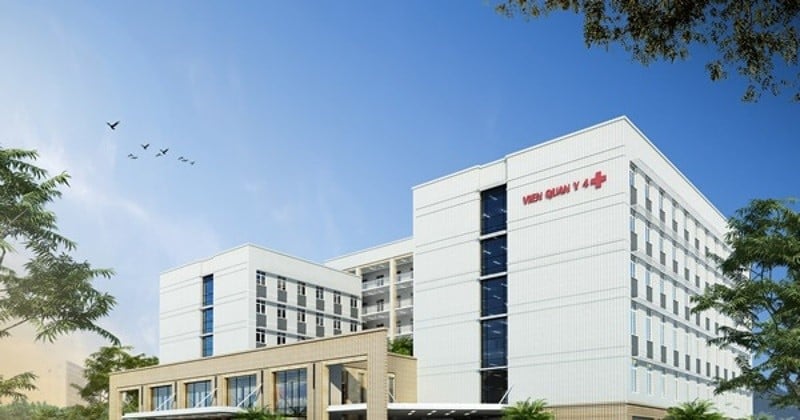 |
| Perspective of Military Hospital 4 |
The project has a total investment of VND 550 billion from the state budget, including 6 construction bidding packages and is currently being widely bid through the network. Specific bidding packages include: XL-04 package for construction of the main house (176,997 billion VND); XL-05 package for construction of solid waste houses, electric stations, medical gases (36,953 billion VND); XL-06 bidding package for construction of infectious internal science (43,809 billion VND); Bidding package XL-07 construction of houses and employees (46.64 billion VND); Bidding package XL-08 constructs air conditioning system, fire prevention (78,471 billion); XL-10 package constructs an out-of-house electricity supply system, 22kV line, transformer station (7.2 billion VND).
The project consists of 250 hospitals at 250 beds, barracks, including: Agency work, hall, duty houses, command houses, guest houses, houses, employees, cafeteria, multi -purpose sports houses, technical infrastructure, equipment, enterprises, accompanied by a total floor area of about 34,000 m2.
The project was built in Cam Lo district, Quang Tri province with the design to serve the work of "combining military militia", ready to respond to emergency situations and perform rescue and rescue tasks in 3 provinces south of Military Region 4: Quang Binh, Quang Tri, Thua Thien - Hue as well as Laos.
It is expected that the bidding packages will be opened on 13 and 17/11/2024.
Invest in 19,784 billion dong to build 60.9 km of Nam Dinh - Thai Binh highway 4 lanes
Chairman of Thai Binh Provincial People's Committee has just signed Decision No. 1799/QD - UBND approving the project of investing in the construction of Ninh Binh - Hai Phong Expressway route, the section through Tinh Nam Dinh and Thai Binh by PPP method. This is a project proposed by the Geleximco Group.
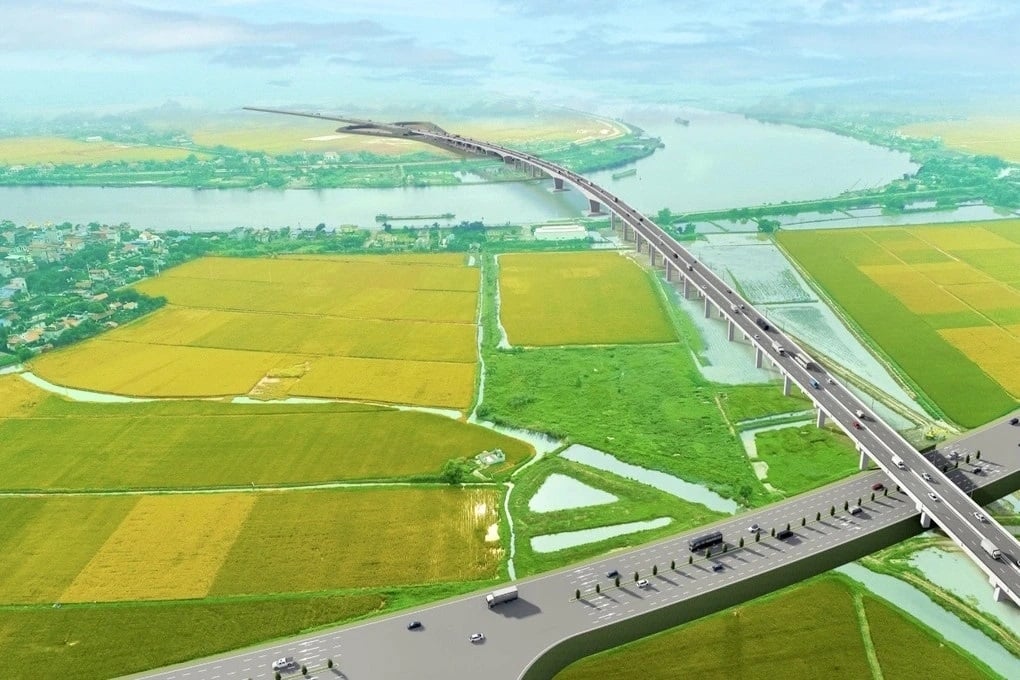 |
| Illustration photo. |
The project has the first point (Km 19+300) at the top of the Day River Bridge in the south of Dinh, in Nghia Thai commune, Nghia Hung district, Nam Dinh province; The end point (Km80+200) at the intersection between the new Highway 37 and the coastal road, in Thuy Trinh commune, Thai Thuy district, Thai Binh province.
The total length of the project is about 60.9 km (of which, the section passing Nam Dinh province is 27.6 km long; the section through Thai Binh province is 33.3 km long) will be built according to the highway standards (TCVN 5729: 2012), 4 complete lanes with 24.5 m road width, design speed of 120km/h.
The project will build 23 bridges on the main route, of which the longest bridge is the overpass of the Red River connecting Thai Binh and Nam Dinh 1,115 m long; 4 cross -bridges; 4 intersections; traffic management system.
On the route is expected to build a resting station at Km 33+500 (Truc Ninh district, Nam Dinh province) and 1 station at km 51+900 (Kien Xuong district, Thai Binh province). Investment, business and exploitation plan for resting stations comply with the provisions of law (not within this project scope).
The total demand for land use is about 538.44 ha (including the planning area of resettlement areas; excluding the area of the station), of which the land is about 8.91 ha; agricultural land is about 453.85 ha; land to build an education and training establishment of about 0.38 ha; production and business land is about 2.1 ha; Other non -agricultural land is about 73.2 hectares (including soil type: transportation, irrigation, cemetery land, energy construction land).
With the above investment scale, the total project investment does not include interest of VND 19,149,275 billion; The total investment includes a loan interest of 19,784.55 billion dong.
The project implementation time is from 2023, basically completed in 2027, put into operation in 2028.
In this project, the capital investor and project enterprises are responsible for arranging VND 10,447.55 billion (52.81%); The state capital is 9,337.00 billion dong (47.19%) for supporting the construction of virginity, the infrastructure system of 6,200.00 billion dong and paying compensation, site clearance, resettlement support is 3,137 billion dong.
With the profit rate of investors is 10.78%/year; loan interest rate of 9.33%/year; The starting fares (2028) for 5 vehicles are: 2,100 -3,000 -4,400 -8,000 -12,000 (VND/km) ... The project will collect a refund fee within 25 years and 4 months.
The form of project investor selection is a spacious bidding in the country; Time to organize the selection of investors in Q4/2024.
Chairman of Thai Binh Provincial People's Committee assigns the Management Board of Investment Project to build Thai Binh transport works to manage the state capital part of the State involved in the project to ensure savings, efficiency, and not to occur negatively, lose, waste and comply with the provisions of law.
This unit will also preside over and coordinate with relevant agencies to complete the bidding documents, submit to the grant with the right to consider and approve as the basis for selecting investors to implement the project; At the same time, organize the selection of investors in accordance with the law.
According to the Ministry of Transport, the Ninh Binh - Hai Phong Expressway has a very important meaning, connecting the provinces of the South of Red River, the North Central region with Lach Huyen International Gate Port, connecting the coastal provinces in the Red River Delta; Investing in the highway will open a new development space for the southern region of the Red River Delta and the North Central Coast; contribute to ensuring traffic safety; Reduce logistics costs.
After the formation route will connect to highways such as the North - South Expressway, Hanoi - Hai Phong Expressway, Highway 10, National Highway 1, Highway 21, new highway 37; Economic development axes such as the economic development of Nam Dinh province, the new road of Nam Dinh - Lac Quan, Thai Binh - Con Rung route.
At the same time, helping to connect with Cat Bi International Airport, Van Don International Airport, Mong Cai International Ports and Border Gate. With the nature, the role of inter -regional roads, the investment and putting into synchronous exploitation of the Ninh Binh - Hai Phong highway will contribute to increasing the ability to connect traffic with roads in the region, between the Northern coastal localities.
Quarter IV/2024, expected to license 4 additional sand mines for the Ring 3 - Ho Chi Minh City project
Ho Chi Minh City Transportation said that there were 6 licensed sand mines and are supplying sand to the 3 -stage belt project through Ho Chi Minh City. It is expected that in the fourth quarter of 2024, there will be 4 more licensed sand mines.
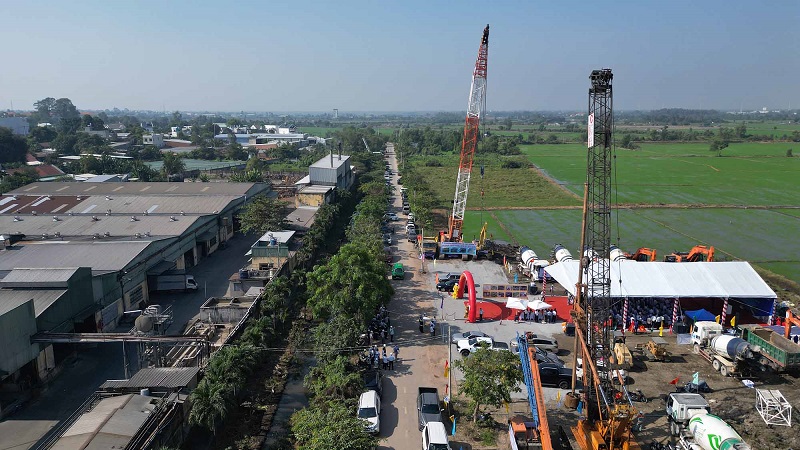 |
| Construction of Ring Road 3 section through Hoc Mon district, Ho Chi Minh City. Photo: Le Toan |
Information was told by the Investment Project Management Board of Ho Chi Minh City Transport works (Transport) on November 7.
According to Ho Chi Minh City Transport, the clearance of the 3 -section Ring Road project through Ho Chi Minh City has reached 99.8% and is expected to be completed in November 2024. In the process of implementing the project, there have been many difficult cases leading to the process of compensation, support and resettlement.
The reason is that the purchase and sale of many owners leads to difficulties in determining owners and legal origins; Origin through many periods, many different management models (corporate land, farm, used before liberation ...).
In Binh Chanh district, there are many cases where people own small areas, and the compensation costs are not enough to carry out financial procedures for resettlement, leading to many difficulties in settling in a new place.
In addition, the percentage of land in some localities such as Ho Chi Minh City. Thu Duc is quite large, many complicated legal documents, it takes a lot of time to complete the procedures and potentially the ability to complain and dispute.
Regarding the guarantee of the supply of construction materials, the transport briefing said that the localities have committed to support the project 3 of Ho Chi Minh City Ring Ring Project with a total volume of 10 million m3 of sand, of which Vinh Long: 1.4 million m3; Tien Giang: 6.6 million m3 and Ben Tre: 2.0 million m3.
The localities have supported and drastically in the implementation of mining licensing. Currently, the licensing procedure has been completed and is providing sand for 6/13 mines, expected in the fourth quarter of 2024 will complete a license of 10/13 mine.
Up to now, contractors have actively mobilized from domestic commercial sand, Cambodian sand and sand are supported from localities to ensure the construction progress of weak ground and auxiliary work of the project.
The transport briefcase together with the construction contractors continues to coordinate closely with localities to accelerate the procedures for licensing the next tissue and proactively coordinate the supply of materials to the construction site from sand mines supported by localities to ensure the progress of the project.
The project of Ring Road 3 of Ho Chi Minh City is 76 km long, passing 4 localities including Ho Chi Minh City, Dong Nai, Binh Duong and Long An with a total investment of VND 75,300 billion. The project started in mid -2023, completing the main road in 2025. However, the biggest challenge at this project is the lack of sand to cover the road.
For more than 3 years, Tam Anh - An An Hoa Industrial Park has only cleared 10 hectares of land.
Vice Chairman of Quang Nam Province, Mr. Ho Quang Buu has just issued a written request to accelerate the compensation and site clearance of construction investment and business projects in Tam Anh - An Hoa Industrial Park.
Accordingly, Quang Nam province requested Nui Thanh district, the Department of Natural Resources and Environment, and the Management Board of Economic Zones and Industrial Parks of the province to coordinate to promptly resolve documents, procedures, and existing issues and problems in the compensation and site clearance work of the project.
In case of problems beyond authority, promptly report to the Provincial People's Committee for consideration and resolution...
According to the proposal of An An Hoa Industrial Park and Urban Area Joint Stock Company, the investor implementing the Tam Anh - An An Hoa Industrial Park project, the project's site clearance is currently facing many difficulties.
According to this enterprise, it has been 3 years and 6 months since the Prime Minister approved the project's investment policy, but compensation work has only been completed on 10.66 hectares/435.6 hectares.
An An Hoa Industrial Park and Urban Area Joint Stock Company requested Quang Nam province to pay attention to site clearance for the project, to start construction soon and attract secondary investors.
Tam Anh - An An Hoa Industrial Park project has adjusted its implementation progress into 4 phases.
Specifically, phase 1 will invest in an area of about 111 hectares; phase 2 will invest in an area of about 137 hectares; phase 3 will have an area of about 147 hectares; phase 4 will invest in the remaining area of the project of 40.8 hectares... The project is expected to be completed in 2028.
In March 2021, the Prime Minister decided to invest in the construction and business of infrastructure of Tam Anh - An An Hoa industrial park (Nui Thanh district).
The project is implemented by An An Hoa Industrial Park and Urban Joint Stock Company with a land use scale of 435.8 hectares. The total estimated investment capital is 1,540 billion VND; of which the investor's capital contribution is 462 billion VND.
Kon Tum rented more than 175,618 m2 of land to implement Dak To 1 hydroelectric project
The People's Committee of Kon Tum Province has just decided to give Dak Lot 1-3 Hydroelectric Co., Ltd. to rent 175,618.11 m2 of land in Mang Krí village, Nguk stamp commune, Kon Plong district, Kon Tum province to build Dak Lot 1 hydropower.
In particular, the area of underground works is 8,481.61 m2; ground area, water surface 167.136.5 m2. In particular, the manager operating the factory: 6,176.7 m2; VH operating road: 55.971.4 m2; Discharge channel (exhaust): 3.116.6 m2; Main door dam route: 21,602.2 m2; Supplementary dam route: 8,917.0 m2; Auxiliary energy glands: 10,310.4 m2; Construction roads TC 1, 2: 13,011.7 m2; Auxiliary area: 10,561.8 m2; Disease yard: 37,468.7 m2.
The purpose of land use is the energy project, public lighting (implementing the construction of Dak Lot 1 hydropower project under the decision to approve the policy No. 420/QD-UBND dated May 16, 2021; Decision No. 579/QD-UBND dated September 9, 2024 on adjustment of the policy).
For items, including underground works; factory operator; VH operating road; Discharge channel (exhaust doors); The main door dam; sub -dam route; Extra energy route for land use term 50 years. For items, including construction roads TC 1 and 2; auxiliary area; The landfill has land use time until December 31, 2025.
The form of land lease is the State for leasing land to pay for the annual land rent. The method of leasing land is to lease land without land use rights, not bidding to select investors to implement projects with land use.
The Provincial People's Committee assigns the Department of Natural Resources and Environment to transfer the land cadastral information to the competent tax authorities to determine the financial obligations as prescribed; sign a land lease contract with Dak Lot Hydroelectric Co., Ltd. 1-3 as prescribed; assume the prime responsibility for, and coordinate with local authorities to hand over land in the field to the land use organization; granting certificates of land use rights, ownership of houses and assets attached to land for Dak Lot Hydroelectric Co., Ltd. 1-3 after the unit fulfills the financial obligations to the State as prescribed.
The Department of Planning and Investment shall assume the prime responsibility for, and coordinate with relevant units, monitor, inspect and urge the implementation of the Dak Lot 1 hydropower project of Dak Lot 1-3 hydropower Co., Ltd. according to the goals, scale and progress of the project approved by competent state agencies as prescribed.
The Provincial Tax Department identifies, guides and promptly notify Dak Lot 1-3 hydroelectric Co., Ltd. to carry out dossiers, procedures and fully comply with financial obligations to the State in determining the unit price of land lease, land use levy, fees, fees and other financial obligations of the project in accordance with regulations, ensuring not to lose state budget.
The People's Committee of Kon Plong district performs the function of state management of land use, construction investment, environmental protection and the observance of other relevant laws of Dak Lot 1-3 Hydroelectric Co., Ltd.; take responsibility before the law, before the provincial People's Committee for the accuracy and suitability of the size of the area, scope, boundaries and confirmation of the compensation, site clearance and resettlement of the project as prescribed; timely detection, strictly handling violators and violators related to the investment, construction and use of land (if any) ... related to the project of Dak Lot 1 hydropower project according to its authority.
Dak Lot 1-3 Hydroelectric Co., Ltd. urgently allocated all resources to complete investment in construction of works under the investment project approved by competent authorities; coordinate with departments, agencies and People's Committees at all levels to perform related tasks.



![[Photo] Ready for the top competitions of Vietnamese table tennis](https://vphoto.vietnam.vn/thumb/1200x675/vietnam/resource/IMAGE/2025/5/18/9c547c497c5a4ade8f98c8e7d44f5a41)

![[Photo] Many young people patiently lined up under the hot sun to receive a special supplement from Nhan Dan Newspaper.](https://vphoto.vietnam.vn/thumb/1200x675/vietnam/resource/IMAGE/2025/5/18/6f19d322f9364f0ebb6fbfe9377842d3)
![[Photo] Party and State leaders attend the special art program "You are Ho Chi Minh"](https://vphoto.vietnam.vn/thumb/1200x675/vietnam/resource/IMAGE/2025/5/18/6895913f94fd4c51aa4564ab14c3f250)



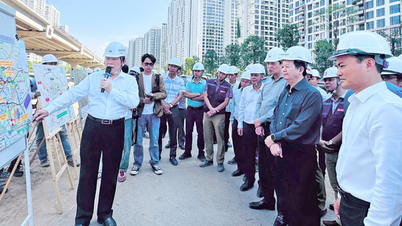



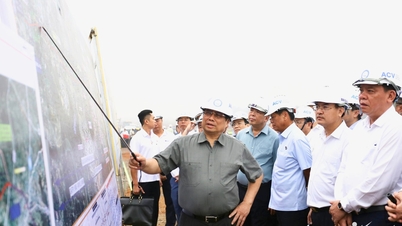


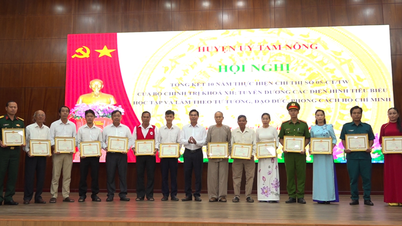
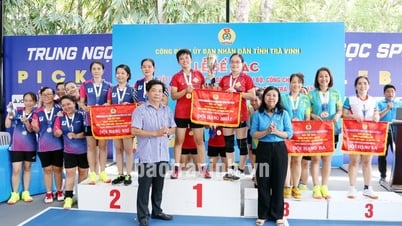
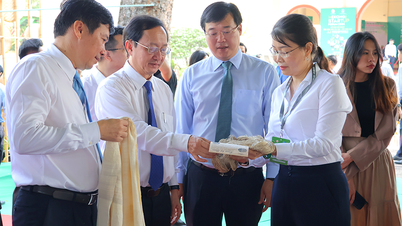
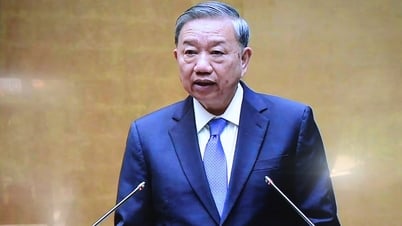
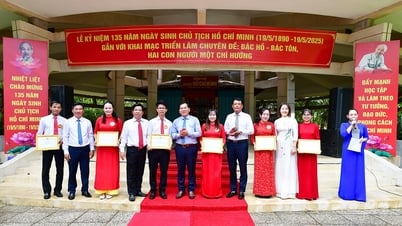
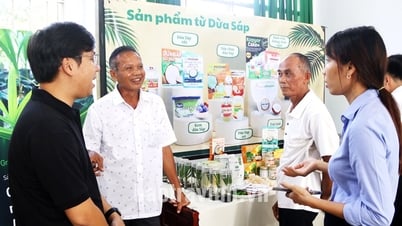






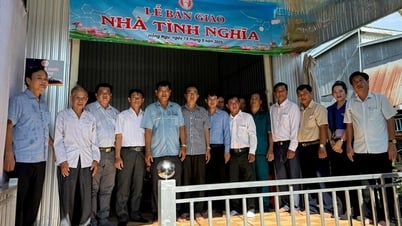


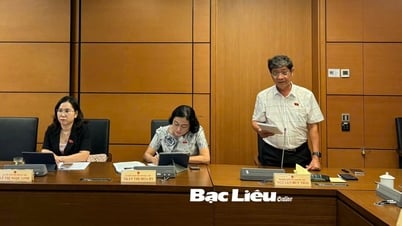














































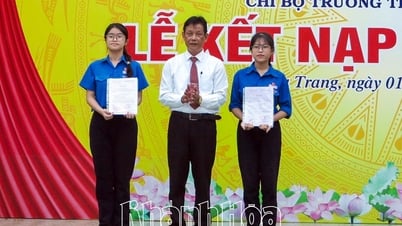

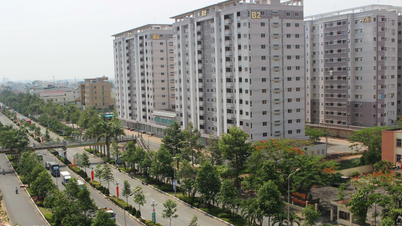

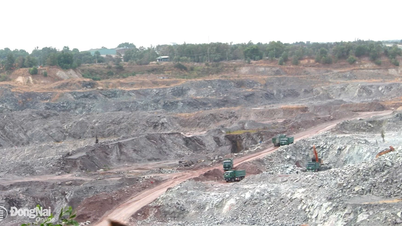
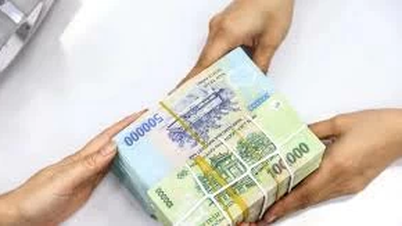
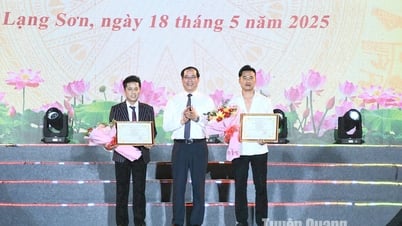












Comment (0)